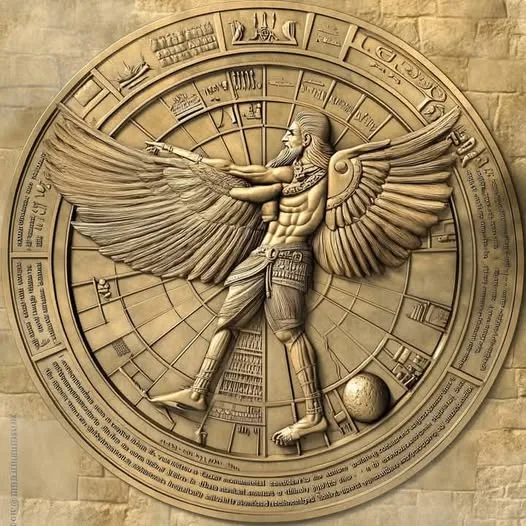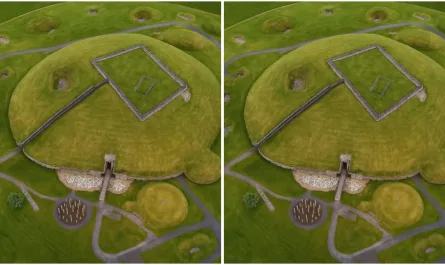In 1976, Zecharia Sitchin’s book The Twelfth Planet introduced a provocative and polarizing theory: the Anunnaki, deities from ancient Mesopotamian mythology, were not gods but extraterrestrial beings from a mysterious planet called Nibiru. According to Sitchin, these aliens visited Earth around 500,000 years ago, shaping human history through genetic engineering, monumental construction, and even cataclysmic events. His ideas, expanded in later works like The Stairway to Heaven (1980), The Wars of Gods and Men (1985), and The End of Days (2007), have captivated audiences while drawing sharp criticism from scholars. In this blog post, we’ll explore Sitchin’s claims about the Anunnaki, their alleged role in human origins, and the enduring debate surrounding his ancient astronaut theories.

Who Were the Anunnaki?
In ancient Mesopotamian texts, such as those from Sumerian, Akkadian, and Babylonian cultures, the Anunnaki were a group of deities associated with the heavens and the underworld. Their name roughly translates to “those of royal blood” or “offspring of Anu,” the sky god. They appear in myths like the Enuma Elish and the Epic of Gilgamesh, often as powerful figures overseeing cosmic and earthly affairs. For mainstream scholars, the Anunnaki are mythological beings, reflective of ancient attempts to explain the natural and social world.
Sitchin, however, reinterpreted these texts through an extraterrestrial lens. In The Twelfth Planet, he claimed the Anunnaki were advanced beings from Nibiru, a supposed rogue planet with a 3,600-year orbit in our solar system. According to Sitchin, they arrived on Earth around 500,000 years ago to mine gold, which they needed to stabilize Nibiru’s atmosphere. This premise sets the stage for his broader narrative about human origins and ancient history.
The Anunnaki’s Alleged Role in Human Creation
One of Sitchin’s most striking claims is that the Anunnaki genetically engineered Homo erectus to create Homo sapiens—modern humans—around 300,000 years ago. He argued that the aliens needed a labor force to mine gold, so they combined their own DNA with that of early hominids, producing intelligent humans to serve as slaves. Sitchin pointed to ancient Sumerian texts, like the Atra-Hasis, which describe gods creating humans from clay, as evidence of this genetic manipulation.
This idea resonates with ancient astronaut enthusiasts but contradicts mainstream science. Genetic evidence shows humans evolved gradually in Africa, with Homo sapiens emerging around 300,000 years ago, consistent with Sitchin’s timeline but without any trace of alien intervention. Critics, including archaeologists and geneticists, argue that Sitchin’s translations of Sumerian texts are speculative, often ignoring linguistic and cultural context.
The Flood, the Nephilim, and Agriculture
Sitchin’s narrative takes a dramatic turn with the biblical Flood. He claimed that around 11,000 BCE, melting Antarctic glaciers—possibly triggered by Nibiru’s gravitational pull—caused a global deluge, akin to Noah’s Flood. This catastrophe, he argued, destroyed the Anunnaki’s Earth bases, forcing them to rebuild. The Nephilim, described in the Bible as “sons of God” or giants, were, in Sitchin’s view, Anunnaki-human hybrids who survived the flood. To aid reconstruction, these hybrids taught humans agriculture, marking the dawn of the Neolithic Revolution.
This theory attempts to tie geological events, like post-Ice Age flooding, to mythology. However, mainstream science attributes the Neolithic shift to agriculture to human innovation around 10,000 BCE, driven by climate stabilization and population growth, not alien guidance. The Nephilim, meanwhile, are widely interpreted as symbolic or mythological figures, not extraterrestrial hybrids.
The Pyramids and Monumental Structures
Sitchin also claimed the Anunnaki were behind the world’s ancient megastructures, including the Egyptian pyramids, Mesopotamian ziggurats, and other sites often cited by ancient astronaut theorists. As historian Ronald H. Fritze notes, Sitchin argued these structures were “so impossible to build without highly advanced technologies” that only aliens could have constructed them. He suggested the Anunnaki used advanced tools or knowledge to erect these monuments as bases, observatories, or markers for their operations.
Archaeologists, however, have well-documented evidence of how ancient civilizations built these structures using human ingenuity, tools, and labor. For example, the Great Pyramid of Giza, built around 2600 BCE, was constructed with ramps, levers, and a skilled workforce, as evidenced by quarry marks and workers’ settlements. Sitchin’s claims lack supporting artifacts or textual evidence, relying instead on reinterpretations of myths.
Human-Alien Hybrids and the Return of the Anunnaki
In later works, Sitchin proposed that the Anunnaki left behind human-alien hybrids, some of whom might still live today, unaware of their extraterrestrial ancestry. These hybrids, he suggested, could explain tales of demigods or exceptional figures in ancient texts. In The End of Days (2007), Sitchin predicted the Anunnaki’s return to Earth, possibly around 2012, aligning with the end of the Mesoamerican Long Count calendar. This prophecy, like many tied to 2012, did not materialize, and no evidence of Nibiru or alien contact has emerged.
The idea of human-alien hybrids and a returning Nibiru remains speculative, with no genetic or astronomical support. The Long Count calendar’s end was a cultural milestone for the Maya, not a prediction of apocalypse or alien arrival, as mainstream scholars emphasize.
The Controversy Surrounding Sitchin’s Work
Sitchin’s books have sold millions, captivating readers with their blend of mythology, science fiction, and conspiracy. His ideas have influenced popular culture, appearing in TV shows like Ancient Aliens and inspiring a niche of alternative history enthusiasts. However, his work is widely debunked by experts in archaeology, linguistics, and astronomy. Key criticisms include:
- Misinterpretation of Texts: Scholars like Michael S. Heiser argue that Sitchin’s translations of Sumerian and Akkadian texts are inaccurate, projecting modern ideas onto ancient myths.
- Lack of Evidence: No physical evidence—artifacts, DNA, or astronomical data—supports Nibiru or alien intervention.
- Scientific Inconsistencies: A planet with a 3,600-year orbit, as Sitchin describes Nibiru, would be detectable by modern telescopes, yet no such body exists.
Despite these critiques, Sitchin’s work resonates with those skeptical of mainstream narratives, tapping into a fascination with humanity’s origins and the mysteries of ancient civilizations.
Why the Anunnaki Theory Persists
Sitchin’s ideas thrive in part because they weave together familiar myths—creation stories, floods, divine beings—with a sci-fi twist that feels plausible in a world of rapid technological change. They also appeal to a desire for hidden knowledge, suggesting humanity’s history is more cosmic than we’ve been told. While mainstream science offers robust explanations for human evolution and ancient architecture, the allure of extraterrestrial intervention remains a powerful narrative.
Conclusion
Zecharia Sitchin’s The Twelfth Planet and its sequels present a bold, imaginative vision of human history, casting the Anunnaki as extraterrestrial architects of civilization. From genetic engineering to pyramid-building to a prophesied return, his claims challenge conventional understanding but lack empirical support. For those intrigued by ancient mysteries, Sitchin’s work offers a thought-provoking, if speculative, lens on the past. Yet, the real story of humanity—rooted in archaeological finds, genetic evidence, and ancient texts—proves just as fascinating, no aliens required.
Whether you’re a skeptic or a believer, the Anunnaki saga invites us to question our origins and explore the rich tapestry of ancient myths. If you’re curious to dive deeper into Mesopotamian mythology, the science of human evolution, or recent discussions on X about ancient astronauts, let me know, and I can dig further!





